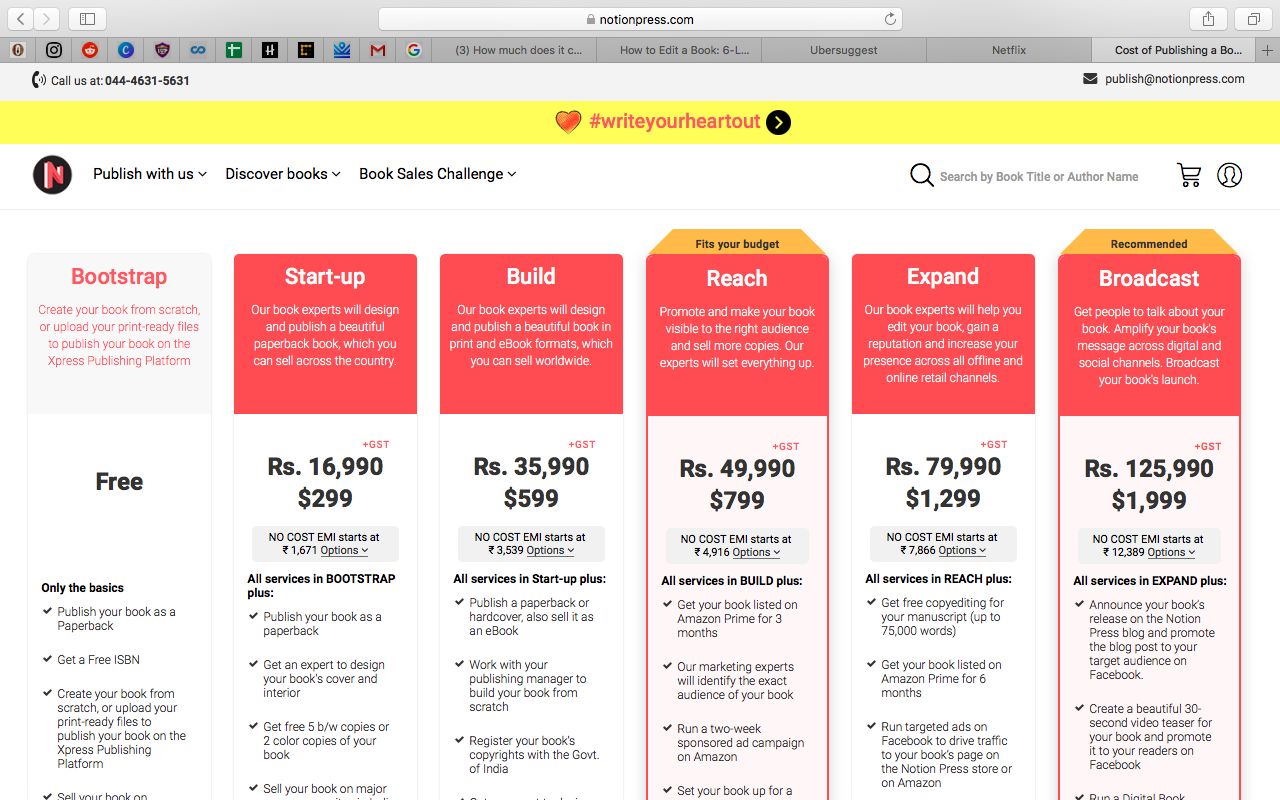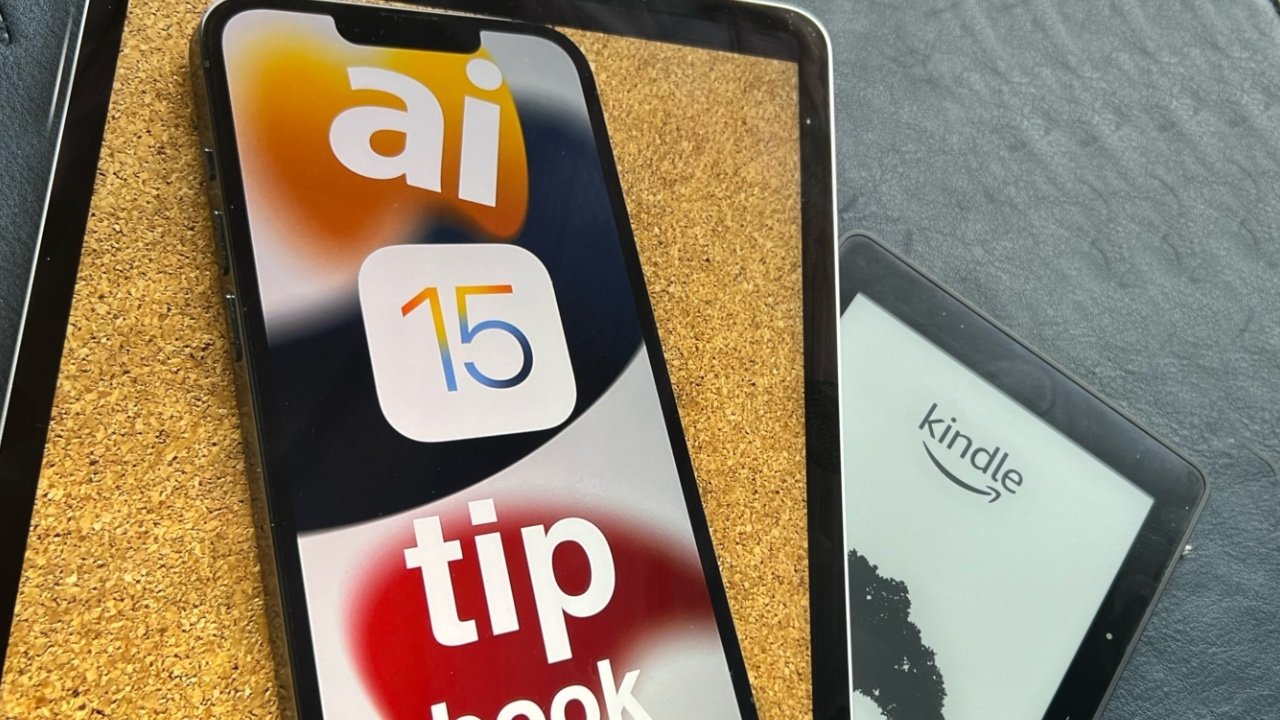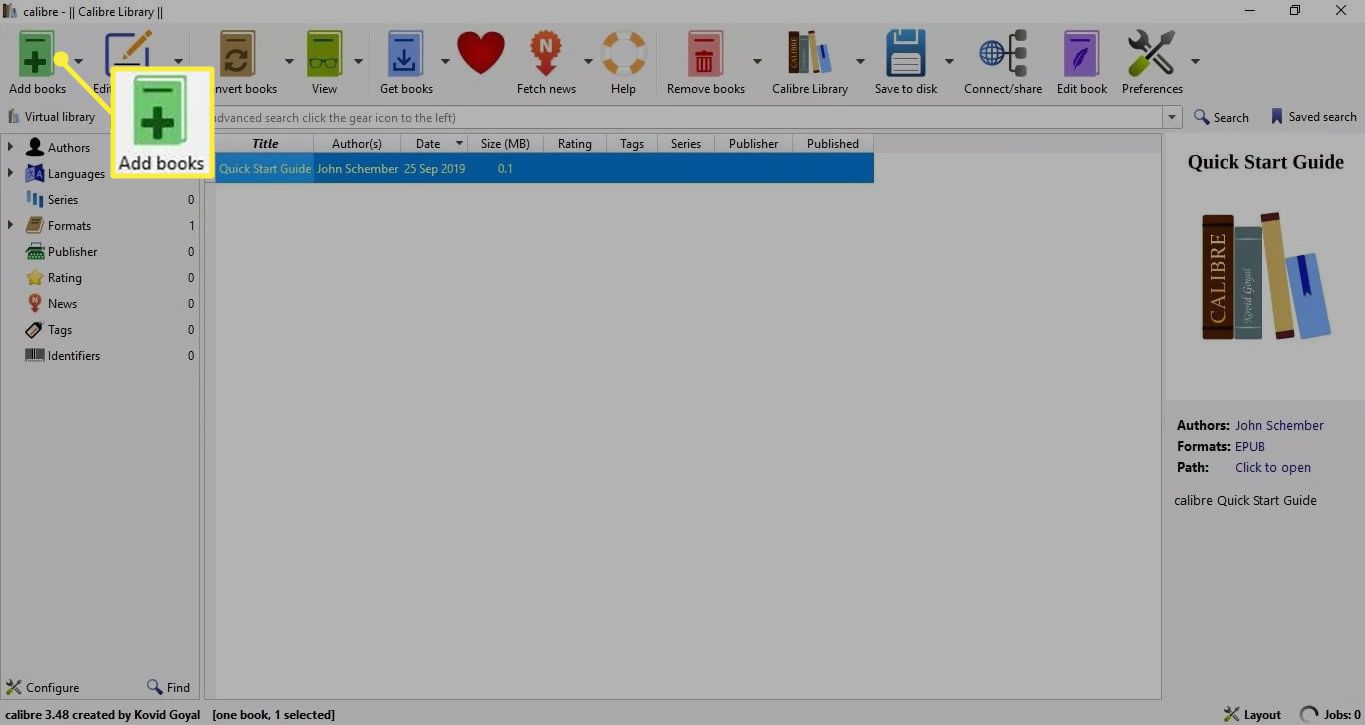Introduction
Welcome to the world of digital publishing! With the rise of eBooks, self-publishing has become more accessible than ever before. Whether you’re an aspiring author or a seasoned writer, publishing an eBook allows you to reach a global audience and share your unique stories and ideas with readers worldwide.
However, one crucial aspect of eBook publishing that often gets overlooked is obtaining an ISBN (International Standard Book Number). In this article, we will explore what an ISBN is, why you need one for your eBook, and different methods to obtain an ISBN.
So, what exactly is an ISBN? An ISBN is a unique identifier assigned to each edition and format of a book. It acts as a universal identifier, ensuring accurate and efficient book metadata management, sales tracking, and library cataloging.
Now, you might be wondering why you need an ISBN for your eBook. While eBooks don’t require an ISBN to be published, having one can offer several benefits. Firstly, it enhances the discoverability of your eBook. With an ISBN, your eBook can be easily cataloged and listed in various online marketplaces, libraries, and databases. This significantly increases the visibility and accessibility of your eBook, making it easier for readers to find and purchase.
Additionally, having an ISBN allows you to distribute your eBook through multiple channels. Many eBook retailers, libraries, and distribution platforms require an ISBN to include your eBook in their catalogs. By obtaining an ISBN, you open doors to more opportunities and potential readership.
Now that you understand the importance of having an ISBN for your eBook, let’s explore different methods to obtain one.
What is an ISBN?
An ISBN (International Standard Book Number) is a unique identifier assigned to each edition and format of a book, including eBooks. It serves as a universal identifier for books, helping with accurate tracking, cataloging, and distribution in the publishing industry.
The ISBN consists of a 13-digit numeric code (14 digits for books published before 2007) that contains information about the country or language group, the publisher, and the specific title and edition of the book. This numeric code is usually displayed on the back cover or the copyright page of a printed book.
The first part of the ISBN identifies the country or language group. For example, ISBNs beginning with 978 or 979 are used for English-language publications. The next segment identifies the publisher, while the following numbers represent the specific title and edition of the book.
With the rise of digital publishing, ISBNs have also been adopted for eBooks. While eBooks don’t require an ISBN to be published, having one can provide several advantages. An ISBN for your eBook helps with accurate metadata management, making it easier for various online retailers, libraries, and databases to catalog and list your eBook. It ensures that your eBook is accurately identified and associated with the correct information.
Moreover, an ISBN allows for better tracking of eBook sales and distribution. By having a unique identifier for your eBook, you can monitor its sales performance, identify trends, and make informed decisions about marketing and distribution strategies. It also simplifies the process of book inventory management for publishers.
Overall, an ISBN is a crucial element in the publishing industry. It ensures the smooth flow of information, improves book discovery, and facilitates proper cataloging and distribution. While it may not be mandatory for eBooks, obtaining an ISBN for your eBook is highly recommended if you wish to enhance its discoverability and reach a wider audience.
Why do I need an ISBN for my eBook?
Obtaining an ISBN (International Standard Book Number) for your eBook can offer numerous benefits and opportunities for both independent authors and publishers. While eBooks do not require an ISBN to be published, here are some compelling reasons why having one is highly recommended:
1. Enhanced Discoverability: With an ISBN, your eBook can be properly cataloged and listed in various online marketplaces, libraries, and databases. This increases its discoverability, making it easier for potential readers to find and purchase your eBook.
2. Global Distribution: Many eBook retailers, libraries, and distribution platforms require an ISBN for inclusion in their catalogs. By obtaining an ISBN, you gain access to more distribution channels, reaching a wider audience and increasing your eBook’s potential readership.
3. Credibility and Professionalism: Having an ISBN adds a level of professionalism and credibility to your eBook. It shows that you are serious about your work and have taken the necessary steps to ensure accurate and efficient book metadata management.
4. Tracking and Reporting: An ISBN facilitates better tracking of eBook sales and distribution. With a unique identifier, you can monitor and analyze your eBook’s sales performance, identify trends, and make informed decisions about marketing and distribution strategies.
5. Improved Book Inventory Management: If you are a publisher or have multiple eBook titles, having an ISBN simplifies book inventory management. It allows for organized tracking of each edition and format, ensuring accurate record-keeping and efficient distribution.
6. Standardization and Compatibility: The ISBN system provides a standardized method of identifying and categorizing books, including eBooks. This ensures compatibility with industry processes, systems, and databases, making it easier for industry professionals to work with your eBook.
7. Future Proofing: Having an ISBN for your eBook helps future-proof your work. It ensures that your eBook’s metadata remains intact and accurate, even if there are changes in distribution platforms or formats.
8. Revenue and Royalties: Some eBook retailers may require an ISBN to calculate and report royalties accurately. By having an ISBN, you can ensure that your eBook sales are properly recorded and royalties are paid accordingly.
While these reasons highlight the advantages of having an ISBN for your eBook, it’s important to note that obtaining an ISBN does come with some costs. However, the benefits and opportunities it provides outweigh the investment for many authors and publishers.
How to Get an ISBN for my eBook
Obtaining an ISBN (International Standard Book Number) for your eBook is a straightforward process. There are different methods available to acquire an ISBN, depending on your location and publishing needs. Here are three common methods to consider:
Method 1: Obtain an ISBN from your local ISBN Agency: Many countries have National or Regional ISBN Agencies that assign ISBNs to publishers and self-published authors. These agencies are responsible for managing the ISBN system within their respective territories. You can visit their websites or contact them directly to inquire about the process and requirements to obtain an ISBN for your eBook.
Method 2: Obtain an ISBN from an ISBN reseller: Some companies act as resellers of ISBNs and provide them to authors and publishers. These resellers usually have a global reach and offer a simplified and streamlined process for obtaining ISBNs. However, it’s important to ensure that the ISBNs you acquire from resellers are legitimate and recognized by the publishing industry.
Method 3: Obtain an ISBN through a self-publishing platform: Many self-publishing platforms, such as Amazon Kindle Direct Publishing (KDP) and Smashwords, provide free or low-cost ISBNs to authors who publish their eBooks through their platforms. This can be a convenient option if you are planning to publish exclusively through a specific platform.
When applying for an ISBN, you will need to provide certain information about your eBook, such as the title, author name, format, and edition number. It’s essential to ensure the accuracy of this information as it will be associated with your eBook’s ISBN.
Once you have obtained an ISBN for your eBook, you will need to include it in your eBook’s metadata and on its copyright page. This ensures that the ISBN is properly associated with your eBook and can be easily identified by retailers, libraries, and readers.
It’s important to note that in some cases, you may need multiple ISBNs if you publish your eBook in different formats (e.g., ePub, Mobi) or editions (e.g., revised edition, second edition). Each format or edition typically requires a unique ISBN.
Before deciding which method to choose, consider your publishing goals, budget, and long-term plans. Research the pros and cons of each method and weigh them against your specific needs and requirements.
Ultimately, obtaining an ISBN for your eBook is an important step in the publishing process. It ensures accurate identification, enhances discoverability, and opens up distribution opportunities, allowing your eBook to reach a wider audience.
Method 1: Obtain an ISBN from your local ISBN Agency
If you’re looking to obtain an ISBN (International Standard Book Number) for your eBook, one of the most reliable methods is to contact your local ISBN Agency. Many countries have National or Regional ISBN Agencies that are responsible for assigning ISBNs to publishers and self-published authors.
Here’s a step-by-step guide on how to obtain an ISBN from your local ISBN Agency:
1. Research your local ISBN Agency: Start by identifying the ISBN Agency that operates in your country or region. You can do this by conducting a simple online search or by visiting the International ISBN Agency website, which provides a list of National and Regional ISBN Agencies around the world.
2. Visit the ISBN Agency’s website: Once you have identified your local ISBN Agency, visit their official website. This will provide you with detailed information on how to apply for an ISBN and the requirements specific to your country or region.
3. Compile the required information: Before applying for an ISBN, gather all the necessary information about your eBook, including the title, author name, format, and edition number. Some ISBN Agencies may also require additional information, such as the genre or subject category of your eBook.
4. Complete the application form: On the ISBN Agency’s website, you will find an application form or instructions on how to apply. Fill out the required fields accurately and provide all the requested details about your eBook.
5. Submit the application: Once you have completed the application form, submit it to the ISBN Agency following their specified guidelines. This may involve submitting the form online, mailing a physical copy, or using an electronic submission system.
6. Pay the necessary fees: In some cases, there may be fees associated with obtaining an ISBN. The cost varies depending on your location and the policies of the ISBN Agency. Review the fee structure provided by the Agency and make the required payment, if applicable.
7. Wait for the assignment: After submitting your application and payment, you will need to wait for the ISBN Agency to process your request. The processing time may vary, so it’s important to be patient during this stage.
8. Receive your assigned ISBN: Once your application has been approved, the ISBN Agency will assign you a unique ISBN for your eBook. You will typically receive the ISBN along with any additional information or instructions on how to include it in your eBook’s metadata and copyright page.
Remember to follow the guidelines provided by your local ISBN Agency throughout this process. It’s crucial to provide accurate and complete information to ensure that your assigned ISBN is valid and associated correctly with your eBook.
Getting an ISBN from your local ISBN Agency is a recommended choice for authors and publishers who prefer a reliable and recognized method of obtaining an ISBN. It ensures that your eBook is properly identified and cataloged, enhancing its discoverability and credibility in the publishing industry.
Method 2: Obtain an ISBN from an ISBN reseller
If you’re looking for a more convenient and streamlined approach to obtaining an ISBN (International Standard Book Number) for your eBook, you can consider obtaining one from an ISBN reseller. ISBN resellers are companies that act as intermediaries, providing ISBNs to authors and publishers for a fee.
Here’s a step-by-step guide on how to obtain an ISBN from an ISBN reseller:
1. Research reputable ISBN resellers: Conduct thorough research to identify reputable ISBN resellers. Look for companies that are well-known and recognized within the publishing industry to ensure the ISBNs you acquire are legitimate and accepted worldwide.
2. Compare pricing and features: Compare the pricing and features offered by different ISBN resellers. Take into consideration factors such as cost, package options, customer support, and any additional services provided.
3. Choose a reseller and navigate their website: Select the ISBN reseller that best suits your needs and navigate to their website. Familiarize yourself with their services, terms, and requirements before proceeding.
4. Fill out the ISBN application: Locate the ISBN application form on the reseller’s website and provide the necessary details about your eBook. This typically includes information such as title, author name, format, and edition number.
5. Pay the required fee: ISBN resellers usually charge a fee for their services. Review their pricing structure and proceed with making the required payment using the provided payment methods. Ensure that the transaction is secure before entering any sensitive information.
6. Receive your assigned ISBN: Once your application is processed and payment is confirmed, the ISBN reseller will assign you a unique ISBN for your eBook. They will typically provide you with the assigned ISBN and instructions on how to include it in your eBook’s metadata and copyright page.
7. Ensure legitimacy and recognition: Before utilizing the ISBN obtained from a reseller, verify that the ISBN is legitimate and recognized within the publishing industry. Some resellers may provide reassurances regarding the validity and acceptance of their assigned ISBNs.
8. Follow reseller guidelines: Abide by the guidelines and terms set by the ISBN reseller when using the assigned ISBN. This includes correctly incorporating the ISBN in your eBook and adhering to any additional instructions provided by the reseller.
While obtaining an ISBN from an ISBN reseller offers convenience, it’s important to ensure that the reseller you choose is reputable and respected within the publishing community. Research customer reviews and industry feedback to gain insights into the reseller’s credibility and reliability.
Keep in mind that some resellers may offer additional services alongside the ISBN, such as book metadata management or distribution assistance. Consider these factors when selecting a reseller, as they can provide added value to your publishing journey.
Choosing to obtain an ISBN from an ISBN reseller can be a suitable option for authors and publishers seeking a straightforward and accessible way to acquire an ISBN for their eBook. Just ensure you conduct thorough research and select a reputable reseller to ensure the legitimacy and acceptance of the ISBN.
Method 3: Obtain an ISBN through a self-publishing platform
If you’re planning to self-publish your eBook, one convenient method to obtain an ISBN (International Standard Book Number) is through a self-publishing platform. Many popular self-publishing platforms, such as Amazon Kindle Direct Publishing (KDP) and Smashwords, offer free or low-cost ISBNs to authors who publish their eBooks through their platforms.
Here’s how you can obtain an ISBN through a self-publishing platform:
1. Choose a self-publishing platform: Research and choose a self-publishing platform that aligns with your publishing goals and requirements. Some popular platforms include Amazon KDP, Smashwords, and Draft2Digital.
2. Sign up and navigate the platform: Sign up for an account on the chosen self-publishing platform and navigate to the eBook publishing section. Familiarize yourself with the platform’s guidelines and terms before proceeding.
3. Prepare your eBook for publishing: Format your eBook according to the self-publishing platform’s specifications. This includes ensuring proper layout, formatting, and inclusion of necessary metadata such as title, author name, and book description.
4. Start the publishing process: Initiate the eBook publishing process on the self-publishing platform. You will be guided through a series of steps, including entering information about your eBook, uploading the manuscript, and setting pricing and distribution options.
5. Check for ISBN options: During the publishing process, the self-publishing platform will prompt you to enter or select an ISBN for your eBook. Look for the option to acquire an ISBN through the platform itself.
6. Apply for an ISBN: If the self-publishing platform offers ISBN acquisition as part of their services, you can follow the instructions provided to apply for an ISBN. This may involve filling out an application form or providing the necessary details about your eBook.
7. Receive your assigned ISBN: Once you have successfully applied for an ISBN through the self-publishing platform, they will assign you a unique ISBN for your eBook. You will typically receive the assigned ISBN along with instructions on how to include it in your eBook’s metadata and copyright page.
8. Publish your eBook: Complete the remaining steps of the publishing process on the self-publishing platform, including setting your eBook’s availability, confirming distribution territories, and setting pricing. Follow the platform’s guidelines and preferences to finalize the publishing of your eBook.
By obtaining an ISBN through a self-publishing platform, you benefit from a streamlined process as the platform manages the ISBN assignment on your behalf. This eliminates the need for external ISBN application or payment.
However, it’s important to note that the ISBN received through a self-publishing platform may be specific to that platform’s distribution channels. If you plan to distribute your eBook through other platforms or channels, additional ISBNs may be required.
For authors focusing solely on a specific platform or looking for a cost-effective solution, obtaining an ISBN through a self-publishing platform can be a convenient option. Just ensure that you understand the platform’s terms and policies regarding ISBN usage and distribution rights.
Things to consider when getting an ISBN for your eBook
When obtaining an ISBN (International Standard Book Number) for your eBook, there are several important factors to consider. These considerations will help ensure that you make informed decisions regarding the acquisition and usage of your ISBN:
1. International distribution: If you plan to distribute your eBook globally or through various platforms, it’s essential to obtain an ISBN that is recognized internationally. This will ensure that your eBook can be easily cataloged and listed across different territories and publishing channels.
2. Format and editions: Consider the different formats and editions in which you plan to publish your eBook. Each format or edition generally requires a unique ISBN. If you plan to release your eBook in multiple formats or editions, you may need to obtain multiple ISBNs to accurately identify each version.
3. Cost implications: Evaluate the financial implications of obtaining an ISBN. Some methods, such as obtaining an ISBN from your local ISBN Agency, may involve minimal or no cost. However, using an ISBN reseller or obtaining an ISBN through a self-publishing platform may incur fees. Consider your budget and publishing goals when deciding on the best approach.
4. Ownership and rights: Ensure that you understand the ownership and rights associated with the ISBN you acquire. Depending on the method used, you may retain full ownership of the assigned ISBN or have limited rights to use it solely on specific platforms or distribution channels. Read the terms and conditions provided by the ISBN provider to have a clear understanding of your rights and obligations.
5. Metadata accuracy: Accuracy in providing metadata associated with your ISBN is crucial. Double-check that the information you provide, such as the title, author name, format, and edition, is correct and consistent across all platforms where your eBook will be published. Accurate metadata ensures that your eBook is properly identified and associated with the correct information.
6. Long-term considerations: Consider your long-term publishing plans and goals. If you plan to publish multiple eBooks or different editions over time, it may be beneficial to acquire a block of ISBNs to have a stable inventory and maintain consistency in your publications.
7. ISBN assignment method: Assess the advantages and limitations of the different methods available for obtaining an ISBN. Research the requirements, application process, and support provided by various ISBN providers, such as local ISBN Agencies or ISBN resellers, to determine the best fit for your specific needs and preferences.
8. Industry standards: Stay informed about industry standards and practices related to ISBN usage. Familiarize yourself with guidelines and best practices for incorporating the ISBN in your eBook’s metadata and copyright page. Adhering to industry standards ensures professionalism and compatibility with industry processes and systems.
By considering these factors, you can make informed decisions about obtaining and using an ISBN for your eBook. Remember that obtaining an ISBN is an investment in the discoverability and legitimacy of your eBook, leading to potential opportunities for increased visibility and reach among readers and publishing professionals.
Conclusion
Obtaining an ISBN (International Standard Book Number) for your eBook is a crucial step in the publishing process that enhances the discoverability and credibility of your work. While eBooks do not require an ISBN to be published, having one can open up numerous opportunities for global distribution, improved metadata management, and accurate tracking of sales and royalties.
Throughout this article, we discussed various methods to obtain an ISBN for your eBook. You can choose to approach your local ISBN Agency, work with an ISBN reseller, or acquire an ISBN through a self-publishing platform. Each method has its own advantages and considerations, so it’s important to evaluate your needs, budget, and long-term publishing goals when selecting the best option for you.
When obtaining an ISBN, it’s essential to provide accurate metadata and follow industry standards for its usage. Check the guidelines provided by ISBN providers and ensure that your eBook’s information, such as title, author name, format, and edition, is consistent and precise across all platforms and channels.
Remember that an ISBN is an international identifier that helps your eBook stand out in the vast digital publishing landscape. It improves book discoverability, facilitates accurate cataloging, and enables effective distribution. By having an ISBN, you increase your eBook’s chances of being found and purchased by readers, making it a valuable asset for authors and publishers alike.
Whether you’re a self-published author or a publisher looking to establish a professional presence in the digital world, obtaining an ISBN for your eBook is an investment worth considering. It boosts the visibility and integrity of your work, helping you reach a wider audience and maximizing the potential for success in the ever-evolving digital publishing industry.

























